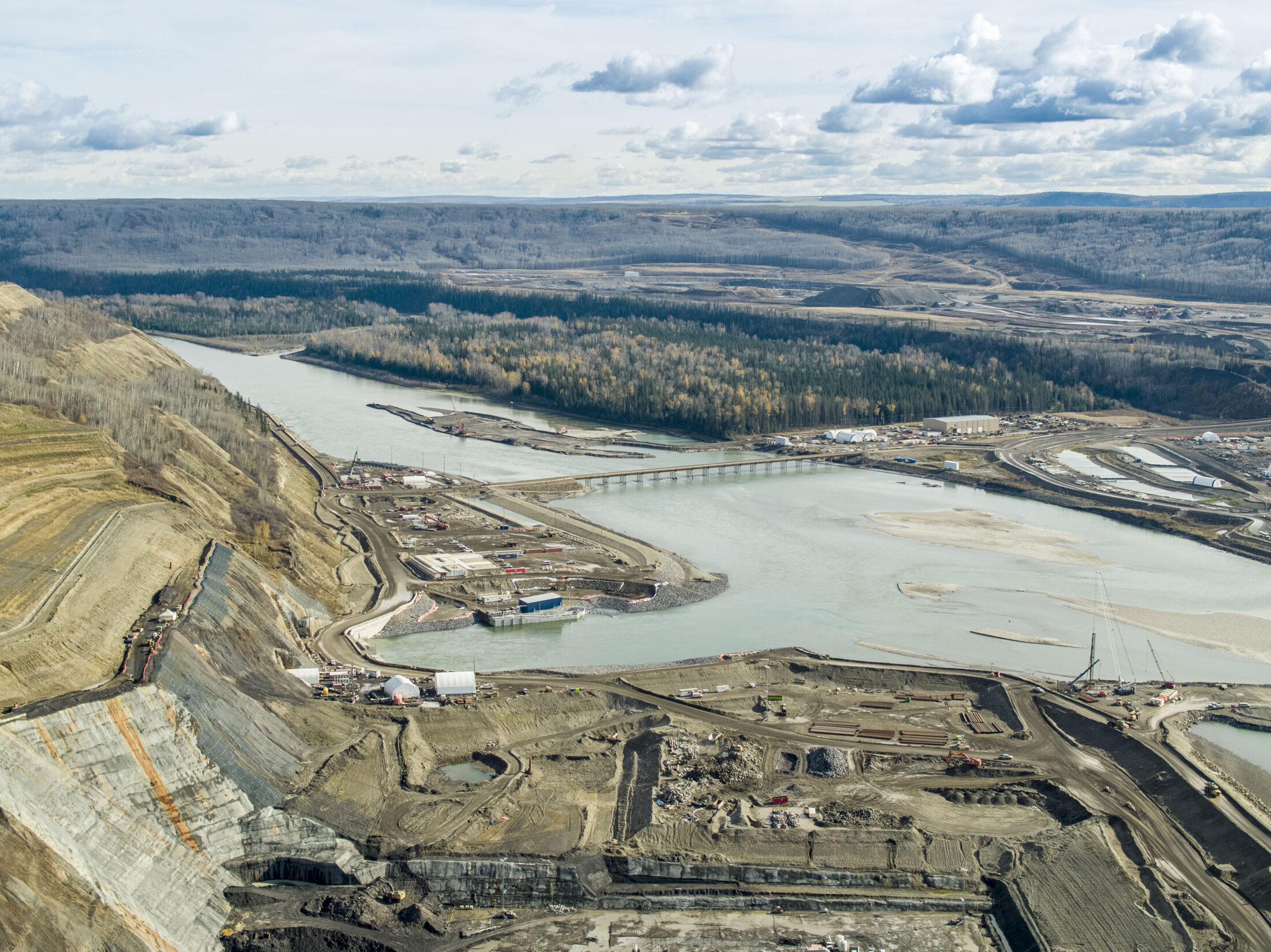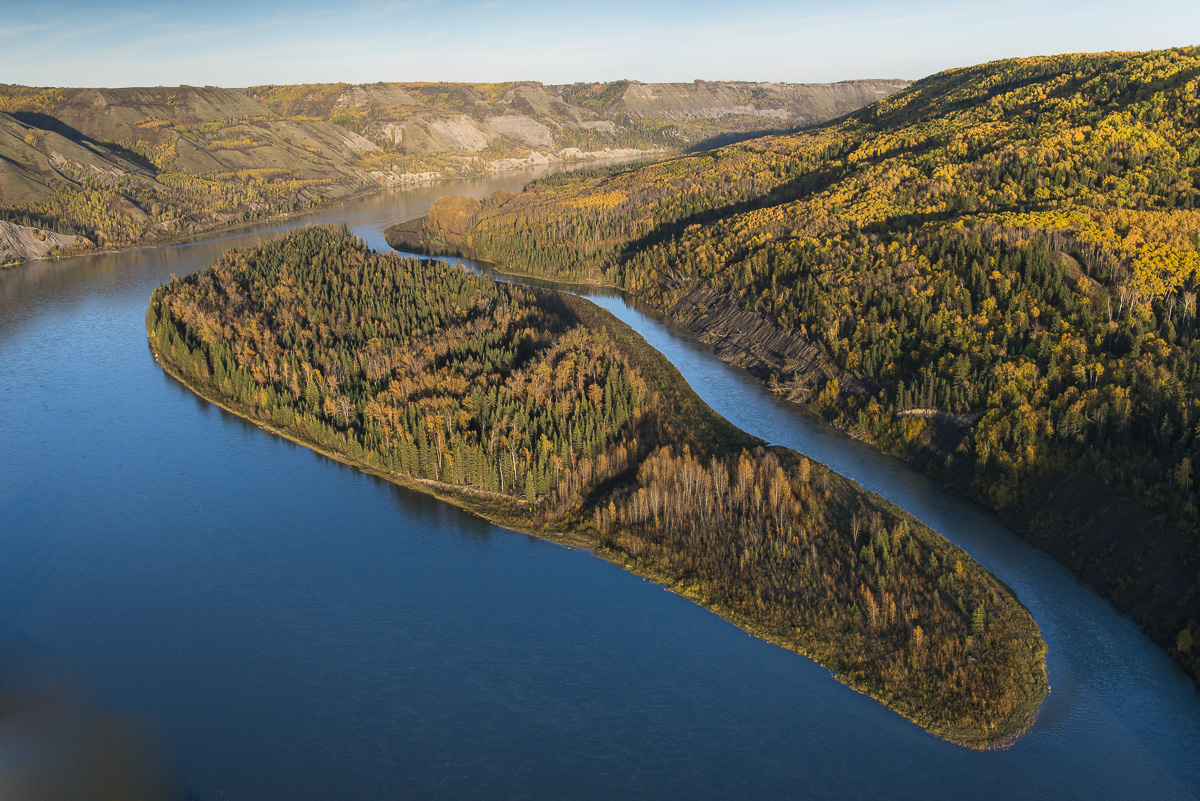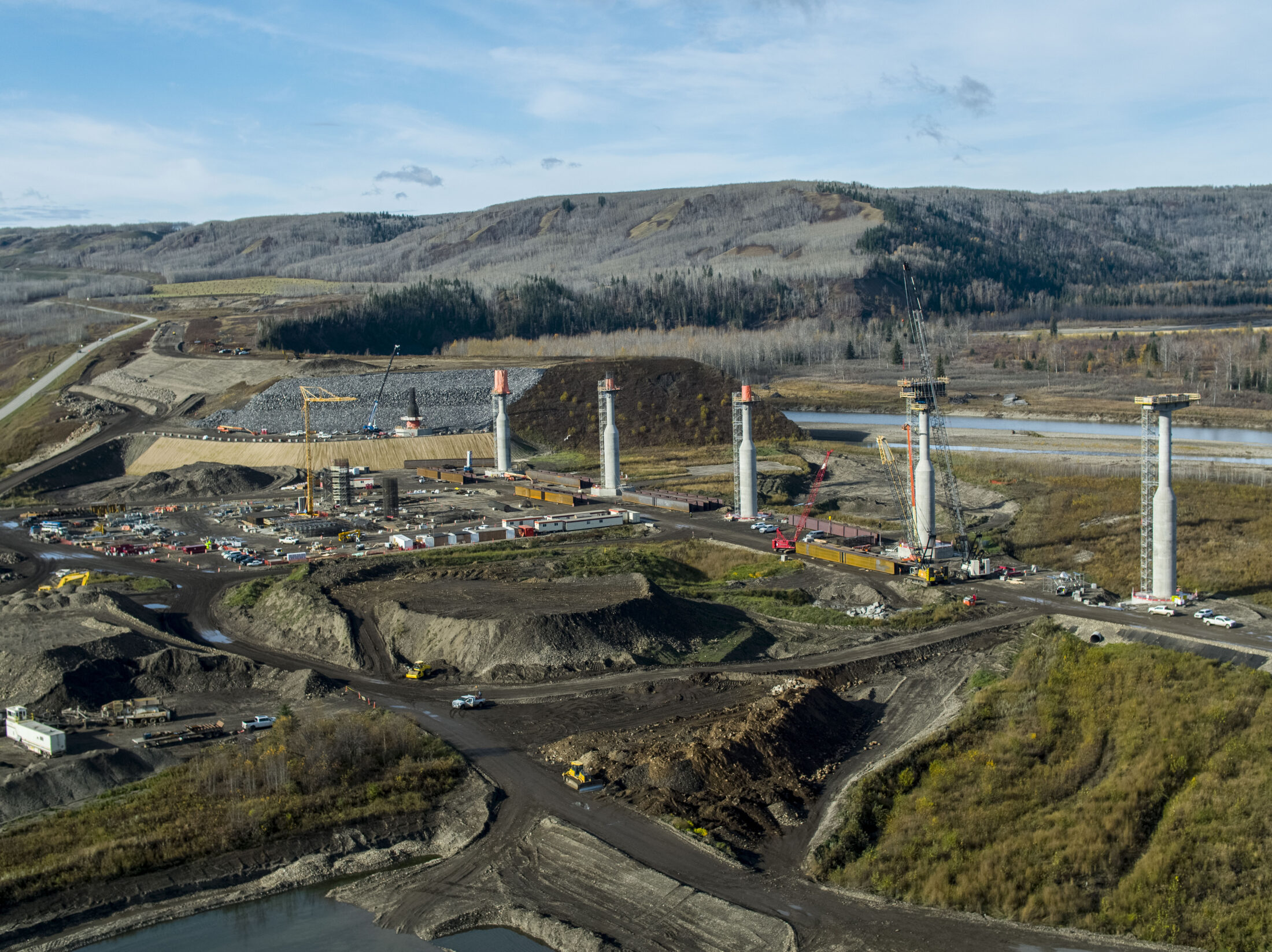
The Narwhal picks up National Magazine Award nomination for Amber Bracken’s oilsands photojournalism
Bracken was recognized for intimate portraits of residents of Fort Chipewyan, Alta., who told her...
BC Hydro handed out more than $171 million in no-bid
Site C dam contracts over an eight-month period ending in July 2020, including to the beleaguered engineering firm SNC Lavalin, The Narwhal has learned.
SNC Lavalin, which in 2013 was banned from World Bank contracts for 10 years due to fraud and corruption overseas, received almost $27 million in three new direct-award Site C dam contracts, according to information The Narwhal received from BC Hydro through a freedom of information (FOI) request.
That’s in addition to $131 million in Site C dam no-bid contracts BC Hydro had already
granted SNC Lavalin, which is responsible for designing core components of the over-budget dam on B.C.’s Peace River, the largest publicly funded project in the province’s history.
The FOI response also shows that TE Little Consulting, a firm headed by Tim Little, BC Hydro’s former chief engineer, received $309,000 in December 2019 for Little’s services as the Site C dam “independent engineer.” According to an earlier FOI response, Little, who reports to the B.C. government on all aspects of the dam’s construction, also received a no-bid Site C contract as an “independent engineer” worth $360,000 in December 2018.
“This pattern of contracting out has been seen in so many past boondoggles and white elephants of government spending.”
Duff Conacher, co-founder of Democracy Watch, a national non-profit organization that focuses on government accountability and corporate responsibility, said all direct-award contracts for the Site C dam should be investigated through a full public inquiry.
“In the big picture, [BC Hydro’s] contracting out process violates all the rules of good government spending,” Conacher, a PhD candidate in government ethics and law at the University of Ottawa, said in an interview.
“This pattern of contracting out has been seen in so many past boondoggles and white elephants of government spending.”
In 2010, former BC Liberal Party premier Gordon Campbell announced plans to build the Site C dam on the Peace River in northeast B.C., saying the project would cost $6.6 billion.
Last year, the price tag stood at $10.7 billion, following three budget increases that included an extra $2 billion approved by the NDP government in 2017.
But that was before the disclosure last July of geotechnical problems so profound that BC Hydro says it doesn’t know how to fix them, how long it will take or what it will cost.
Direct-award contracts allow BC Hydro and other public bodies to decide which companies or consultants get contracts, instead of going through a more transparent and competitive tender process.
Undisclosed BC Hydro employees have handed out hundreds of millions of dollars in no-bid contracts for work on the Site C project, according to The Narwhal’s calculations, based on responses to a series of freedom of information requests over the past four years. The exact amount is difficult to pinpoint because parts of all but the latest FOI response were redacted.
These no-bid contracts include two totalling almost $11 million that BC Hydro granted to
a B.C. numbered company whose officers and directors were top executives of Petrowest, the Alberta company that went bankrupt and was dismissed from Site C’s main civil works consortium.
The largest contract, for $10.1 million, was awarded to the numbered company in late July 2017 — just two weeks before Petrowest was let go from the consortium for insolvency and months after the company’s financial difficulties were reported in the media.
BC Hydro’s FOI response lists 46 direct-award contracts, worth more than $171 million, from Nov. 4, 2019 to July 10, 2020 — more than double the no-bid contracts BC Hydro issued during the previous 12 months, which totalled $27 million.
The majority of the new contracts appear to be unrelated to solving the profound geotechnical problems related to the dam’s “weak foundation,” which senior officials in the B.C. government knew about for more than one year before the information was shared with the public last July, according to a November investigation by The Narwhal.
The latest round of no-bid Site C contracts includes:
In an emailed response to questions, Scott said the Site C dam’s procurement process “is designed to achieve value for money for ratepayers, as well as meet the project schedule, budget and technical requirements.
“The vast majority of contracts to date for the project have been sourced through an open and competitive bid process,” Scott said, noting that about 90 per cent of contracts have been awarded through public bid since construction began in 2015.
Scott said contracts to Little for his services as Site C’s independent engineer are not a conflict of interest because Little is no longer an employee of BC Hydro. Little’s last year as a salaried employee at the Crown corporation was 2011 — the year after the former BC Liberal government announced it would proceed with plans to build the Site C dam following a raft of engineering and other feasibility studies.
Scott said a notice of intent for independent engineering services was posted on BC Bid, the province’s public bid website, in 2016.
“As a result of this process, it was determined that TE Little Consulting Inc. was the preferred company to provide Site C independent engineering services, as they were the most qualified.”

Site C dam construction underway along the Peace River in the fall of 2020. The project has been beset by geotechnical problems due to slop instability along the river’s banks. Photo: Jayce Hawkins / The Narwhal
Nineteen of the most recent contracts went to companies owned by or associated with Treaty 8 First Nations, who signed Site C impact benefits agreements with BC Hydro after the B.C. government gave final approval to the project.
Treaty 8 members were previously opposed to construction of the Site C dam, which will have significant and irreversible adverse impacts on First Nations, according to the final report of a joint review panel that examined the project for the provincial and federal governments. Among many other impacts, the Site C hydro project will destroy Indigenous burial sites and other places of spiritual and cultural importance — including traditional hunting and fishing grounds — and poison fish with methylmercury.
By far the largest amount — more than $49 million, spread across six contracts — went to Duz Cho Construction, a construction company belonging to McLeod Lake Indian Band, the only Treaty 8 member that has spoken out widely in support of the Site C dam. Duz Cho Construction also received a $29.5-million direct-award Site C contract for “site preparation” work in 2016 on the Peace River’s south bank.
4Evergreen Resources, a construction company owned by Saulteau First Nations, received more than $1.7 million in two separate contracts for “construction activities related to Site C,” while Securiguard Services Ltd., a company that has a joint venture with Saulteau First Nations, was awarded $7.2 million in two separate contracts for Site C dam “guard services.” Saulteau EBA Environmental Services was also awarded almost $161,000 for wildlife monitoring.
Halfway River IDL Ltd. Partnership, a partnership between the Halfway River First Nations and IDL Ltd., a construction company, was granted about $1.14 million in three separate no-bid contracts for construction work, grading and paving. Halfway River International also received $165,000 as a “Site C health clinic provider,” while forestry management service company Halfway River Frost LP received three separate contracts totalling more than $7.8 million.
Another Treaty 8 member, West Moberly First Nations, has launched a civil action alleging that the Site C dam and two previous dams on the Peace River constitute an unjustifiable infringement of treaty rights. A trial is scheduled to begin in March 2022 and will last about six months.
“It needs to be fully investigated, and I doubt it could be justified.”
The FOI response showed that BC Hydro spent $200,000 on “Site C Treaty 8 Litigation” in March 2020.
Scott said a number of the direct-award contracts arose from impact benefit agreements or relationship agreements signed with Indigenous groups that included contract commitments.
In contrast to the B.C. government, the federal government prohibits Crown corporations from giving direct-award contracts worth more than $25,000 unless there is a special justification such as a national emergency or national security interests.
Conacher said sole-source contracting can’t be justified, even if BC Hydro’s most recent no-bid awards to SNC Lavalin and Klohn Crippen relate to the unstable foundation on the Peace River’s south bank, which will anchor the dam, powerhouse and spillways.
He said the situation would have to be extremely dire for no-bid contracts to be acceptable. For instance, “This is going to fail tomorrow and we need to have someone come in today, and that’s why we’ve moved so quickly,” he said.
“It needs to be fully investigated, and I doubt it could be justified.”

A segment of the Peace River valley that will be submerged in the future flood zone, which will stretch along 128 kilometres of the Peace River and its tributaries, about the equivalent length of driving from Vancouver to Whistler or from Victoria to Nanaimo. Photo: Garth Lenz / The Narwhal
BC Hydro previously told The Narwhal that Klohn Crippen and SNC Lavalin are the only engineering firms that have the expertise, experience and capacity to provide engineering design services for the Site C dam.
But Conacher rejected that claim, pointing to the debacle over the federal government’s decision to give a lucrative no-bid contract to the WE Charity, a group with ties to the Trudeau family. The federal government had said the WE Charity, formerly known as Free the Children, was the only group capable of administering a national program designed to connect post-secondary students to volunteer opportunities, which didn’t prove to be the case.
“Usually, when these kinds of situations are investigated, all the claims are proven to be completely bogus — that any kind of exception to good spending rules applied,” Conacher said.
“You can’t make that claim after going through a no-bid contract process. You put out an open bid and then you make that claim after assessing all the companies that bid. How can you make that claim in advance? There’s just no way that BC Hydro, sitting in British Columbia, would know what companies worldwide have what capacities on an on-going basis.”
Conacher also said the Site C direct-award contracts likely violate the New West Partnership Trade Agreement among Canada’s western provinces, which mandates that any services or construction contract greater than $100,000 should be issued through open tender unless a public agency can prove an urgent or specialized need.
He said the no-bid awards could also be challenged under the Canadian Free Trade Agreement, which ensures fair and open access to government procurement opportunities for all Canadian suppliers.
Scott said the Site C dam procurement process is designed to fit within all applicable legislation and provincial policies, including trade agreements. The Canadian Free Trade Agreement and New West Partnership Trade Agreement have provisions that allow for direct-award contracts to Indigenous peoples, she said.

Support posts under construction for a new bridge crossing the Halfway River, one of five new bridges being built in order to move a provincial highway out of the future Site C dam flood zone. Photo: Jayce Hawkins / The Narwhal
Information about BC Hydro’s latest Site C no-bid contracts comes as the B.C. cabinet sits on a report from former B.C. deputy finance minister Peter Milburn, who was appointed by the government last July to report on the myriad problems facing the Site C dam.
There has been no public update on the troubled project since last July, and BC Hydro has failed to file two outstanding Site C dam quarterly reports with the watchdog B.C. Utilities Commission to outline the project’s risks, progress and expenditures. The last quarterly report BC Hydro filed with the commission is current to March 31, 2020.
BC Hydro also declined to answer questions from the utilities commission, including about direct-award contracts, by the Nov. 19 response date, saying it is in the process of “re-baselining the project budget and schedule.”
Two expert reports released last fall concluded British Columbians would save money if the Site C dam were immediately cancelled by the new B.C. government following the Oct. 24 provincial election.
A report by U.S. energy economist Robert McCullough, commissioned by the Peace Valley Landowner Association, said the dam will conservatively cost an additional $2.1 billion and ratepayers will save an initial $116 million a year if the project is scrapped and the same amount of energy is procured from other sources.
An “intelligence memo” from the C.D. Howe Institute, addressed to B.C.’s new government, says the case for the Site C dam is “getting weaker” and any meaningful cost increase above $10.7 billion makes cancellation the best choice.
Get the inside scoop on The Narwhal’s environment and climate reporting by signing up for our free newsletter. Angello Johnson’s shoulders burn, and his arms...
Continue reading
Bracken was recognized for intimate portraits of residents of Fort Chipewyan, Alta., who told her...

A guide to the BC Energy Regulator: what it is, what it does and why...

The B.C. government has introduced legislation to fast track wind projects and the North Coast...
